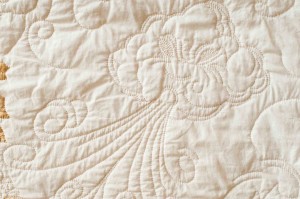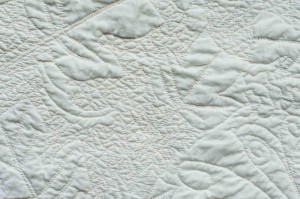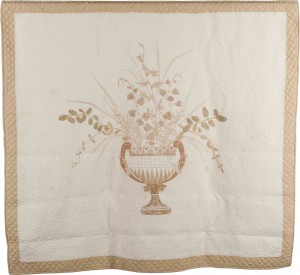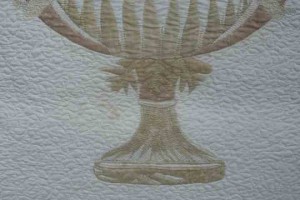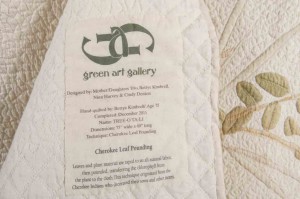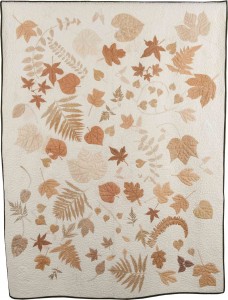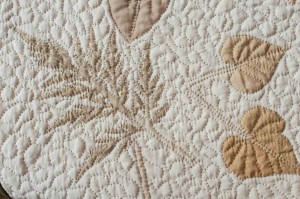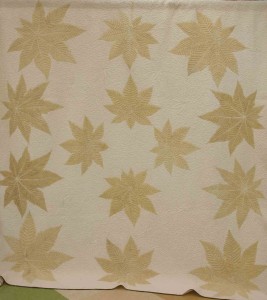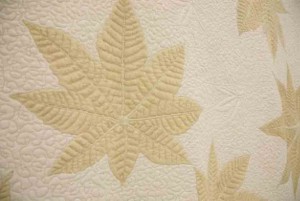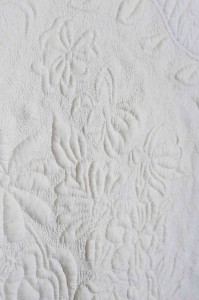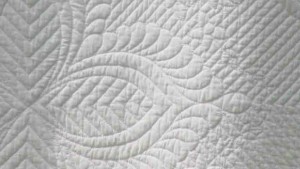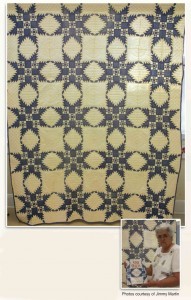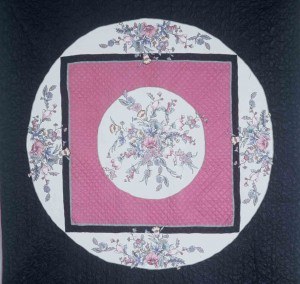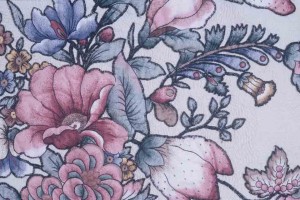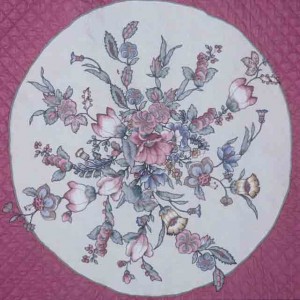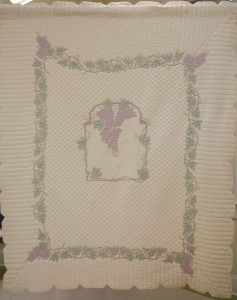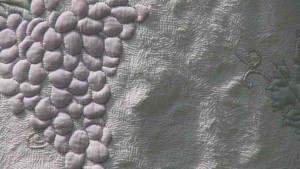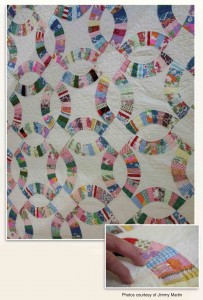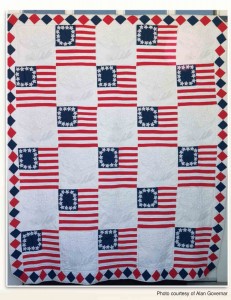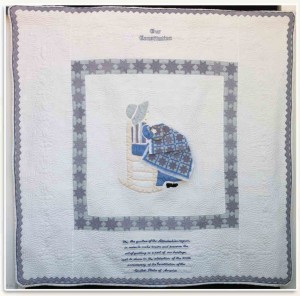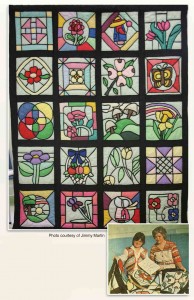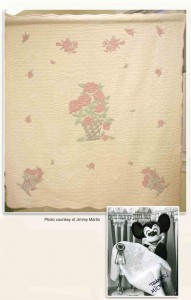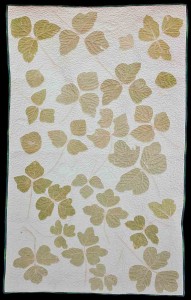
Bettye Kimbrell pounded kudzu leaves to make this wall-hanging. Photo by Alan Govenar, courtesy of Documentary Arts.
Bettye Kimbrell created this wall-hanging for Alan Govenar, president of Documentary Arts, an organization which assisted the National Endowment for the Arts in presenting the 2008 National Heritage fellows on stage at the Strathmore Music Center in Bethesda, MD. When Govenar visited her in Mt. Olive before the event, he requested that she make a quilt for an upcoming touring exhibit and suggested that it feature kudzu leaves. When she agreed he scrambled down a nearby ravine to gather the kudzu she would need for the project.
Bettye did not fill the background with meandering stitches as intensely as she usually did because of the deadline for the piece, yet it is a fine example of Cherokee leaf pounding and a memorial to the smothering vine which is trying its best to cover the south.
The quilt has been viewed in Paris and five cities in Belgium and now is included in Extraordinary Ordinary People: American Masters of Traditional Art. This exhibit is described as “a journey across America through the lives of individuals whose creativity is rooted in their cultural identity and community.” It features numerous art forms and cultural groups that contribute to the vibrancy of American life, including Byzantine (Greek) icon woodcarving, Peruvian retablos (personal altars), Native American basketry, Eastern European lacemaking, and quiltmaking, as well as musical and performing traditions. It has been displayed at Michigan State University Museum (East Lansing), Castellani Art Museum (Niagra, NY), and other sites across the nation. For more information about the exhibit and specific tour dates visit Documentary Arts.
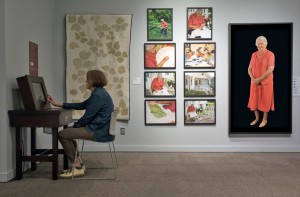
Bettye Kimbrell’s corner of the “Extraordinary Ordinary People” exhibit. Photo by Alan Govenar, courtesy of Documentary Arts
75” L X 58” W (2008)


